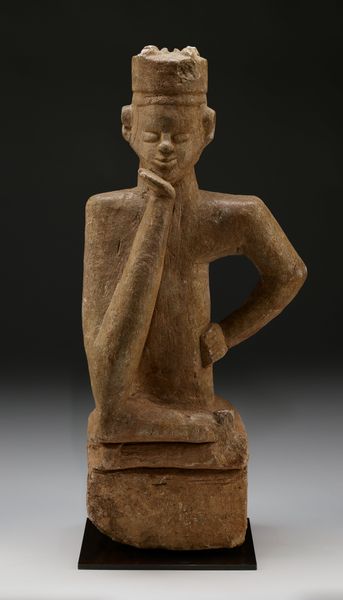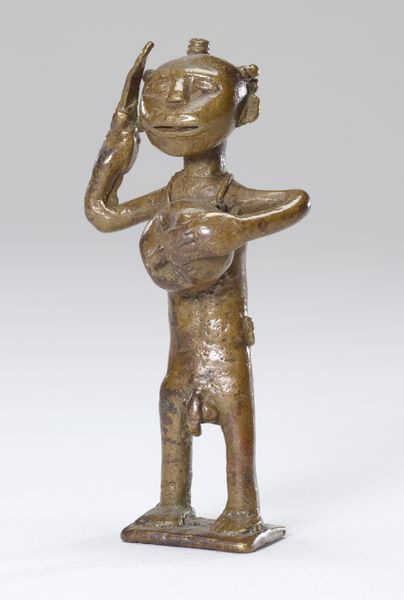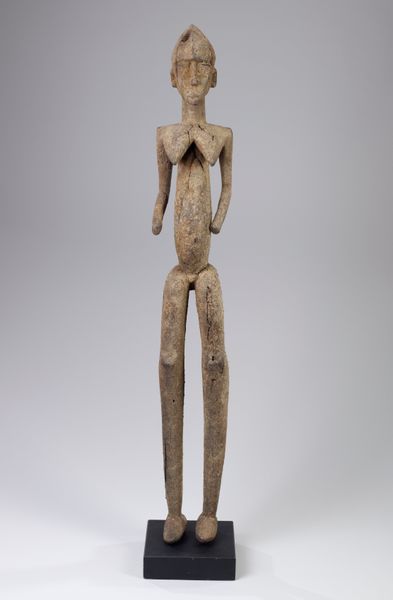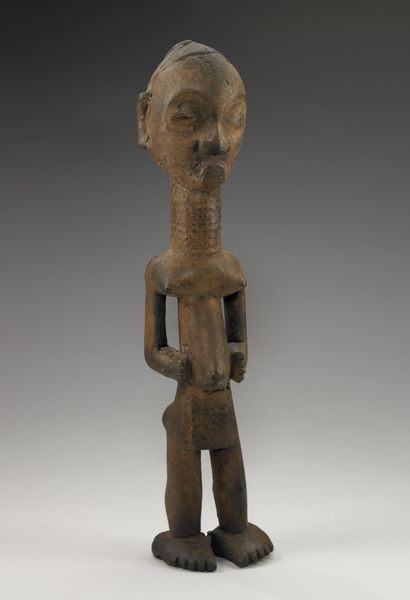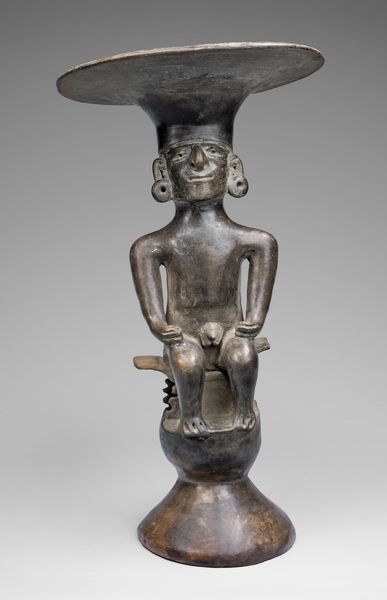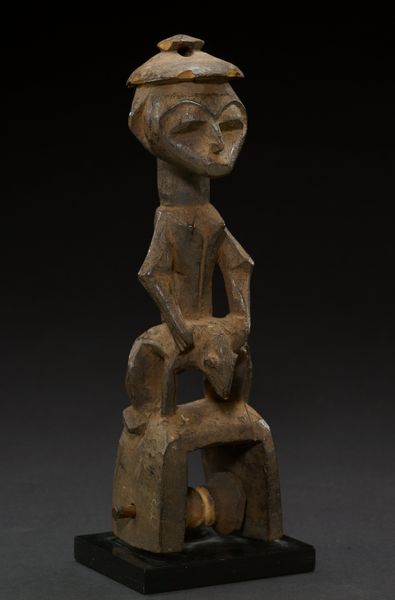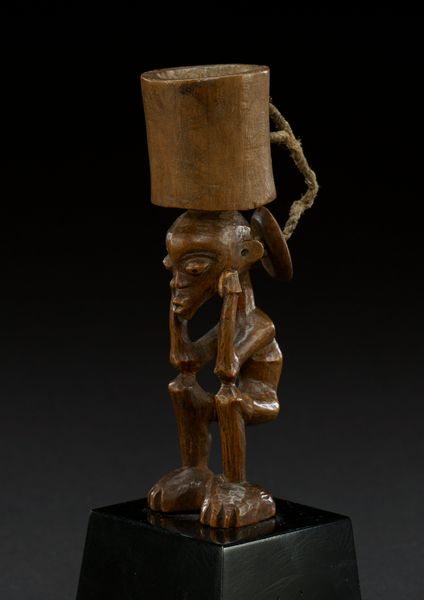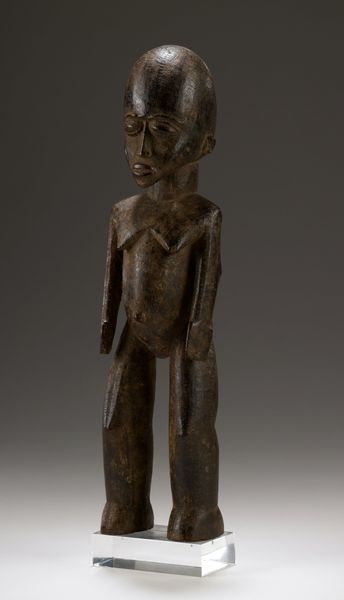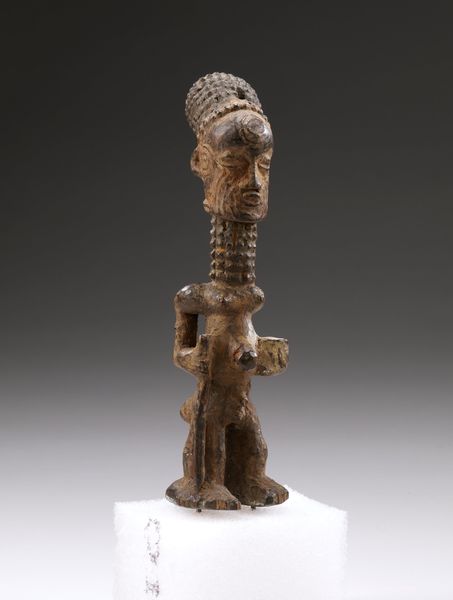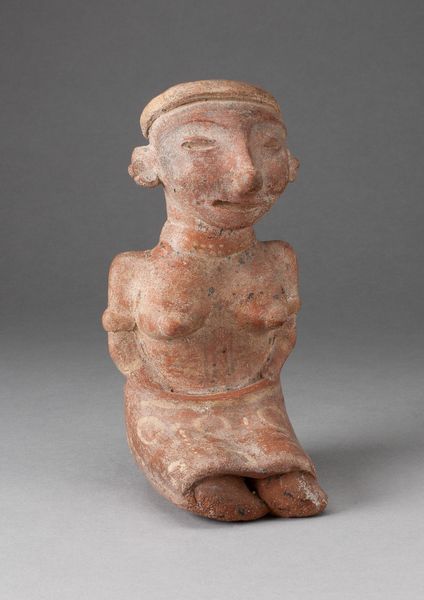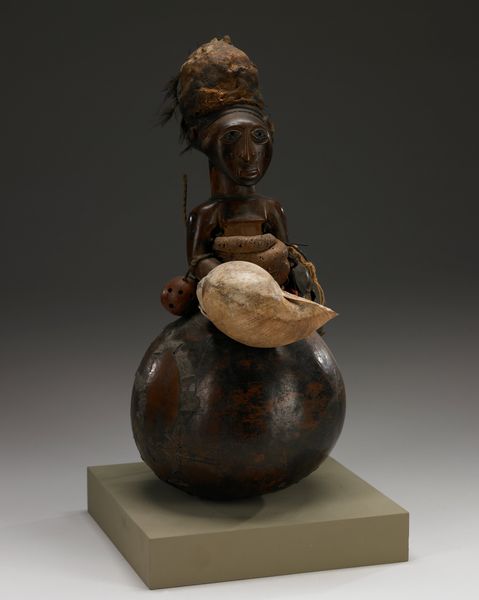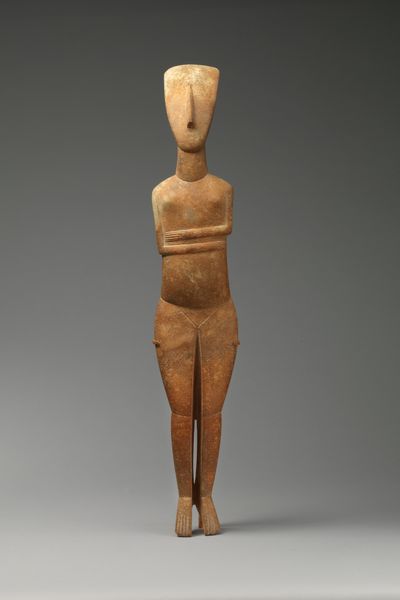
carving, sculpture
#
portrait
#
african-art
#
carving
#
sculpture
Dimensions: 130.5 × 43.2 × 31 cm (51 1/3 × 17 × 12 1/5 in.)
Copyright: Public Domain
Editor: So, this is "Portrait of Metang, the 10th King of Batufam," carved sometime between 1912 and 1914 by a Bamileke artist. It’s currently housed at the Art Institute of Chicago. The figure appears almost frozen mid-motion, holding what looks like a musical instrument. What stands out to you about it? Curator: Well, this sculpture provides us a glimpse into early 20th century Cameroon, a period deeply affected by colonization. The formal portrait itself signifies a shift, doesn't it? Consider what it means to depict an African king using a Western artistic convention. Editor: So the piece operates on this intersection of tradition and imposed foreign influence? Curator: Precisely. The statue also presents an interesting take on power dynamics. What is the king holding? How does his pose – seated, yet still somewhat formal – speak to authority? And importantly, whose gaze are we aligning with when we view this? Editor: It feels like a claim of self-representation during a time when representation itself was fraught with colonial baggage. Was this image of the King perhaps circulated? Or was the carving purely ceremonial? Curator: These are all vital questions! The statue’s material presence embodies power in ways we must interrogate. If the carving was not made for circulation amongst the Bamileke, one must wonder: where was this meant to be displayed and to whom? Who controlled its circulation? Editor: It gives me so much to consider— how artistic traditions transform amidst larger societal shifts. Curator: Exactly. And understanding these entanglements— between art, history, and power— that is how we unlock deeper meaning.
Comments
No comments
Be the first to comment and join the conversation on the ultimate creative platform.


